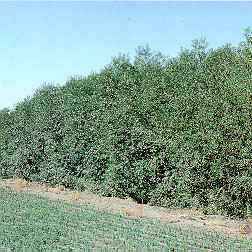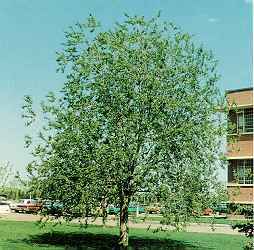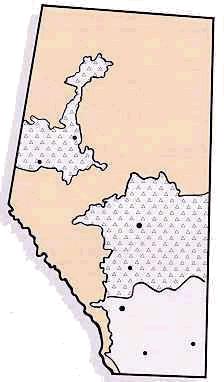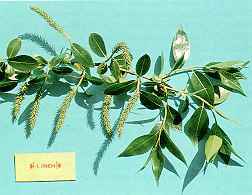| | Plant characteristics | Fall colour | Site preference | Hardiness | Uses | Problems | Diseases | Insects | Pruning
.


Scientific Name: Salix pentandra L.
Plant Characteristics
This tree is deciduous, fast-growing, and dioecious. The branchlets are glabrous and glossy; young growth is sticky.
This willow has unusually broad leaves for the genus and is distinctive because of the dark green colour, the leathery texture, the shininess of its leaves, and it retains its leaves late into the fall. Laurel leaf willow can grow to a mature height of 8 to 15 m (26 to 50 ft) with a spread of 15 m (50 ft). It has an annual growth rate of 50 to 200 cm (1.5 to 6 ft) with between 25 to 60 useful years. It is the most successful willow species.
Bark - Old bark is grey and fissured; twigs are shiny and greenish to brown.
Buds - Yellow.
Leaves - leaves are alternate, simple, elliptic or ovate to 4 to 10 cm (1.5 to 4 in.) long, and 1 to 2 cm (0.5 to 0.75 in.) wide, serrulate, glossy dark green above, paler beneath. The petioles are yellow, 6 to 10 mm (0.25 to 0.5 in.) long. The catkins appear with the leaves.
Propagated by cuttings.
Fall Colour
Green leaves remain late into fall.
Site Preference
Laurel leaf willow can be planted in full sun or half shade. It cannot withstand drought. It can tolerate some flooding. It likes moisture but not poorly drained soil. It prefers an organic soil. It will not tolerate alkaline soils.
Hardiness
Hardy - will survive under extreme climatic conditions, liable to tip dieback when young (not as hardy as acute leaf willow).
.


Uses
Laurel leaf willow is planted as screening, parks planting, shelterbelt and single-stemmed specimen in a landscape situation. For shelterbelt situations, it should be planted 2 to 4 m (6 to 13 ft) between trees in the row and 5 to 8 m (17 to 26 ft) between rows.
Problems
Somewhat susceptible to dieback.
Performs poorly in arid sites.
Diseases
Susceptible to chlorosis.
Insects
Moderately insect free.
Pruning
Should be allowed to develop multistems in shelterbelts. Prune only to remove dead, diseased or broken branches.
.

Shelterbelts Varieties for Alberta provides information on a number of other trees and shrubs than may be suitable for shelterbelts.
Visit our website directory for the Reforestation Woodlot Listings. |
|